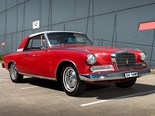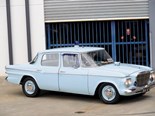Studebaker Wagonaire 1963-1966 Review











































|

|

|

|

|

|

|

|

|

|

|

|

|

|

|

|

|

|

|

|

|
Studebaker may have been an automotive minnow, but the Wagonaire proved it could still come up with big ideas
1963-1966 Studebaker Wagonaire
The sharp-eyed among you may notice that we said ‘Aussie-built’ wagons on the cover. How in hell does a Studebaker fit in? Well, this car and many other models from the same maker were assembled here under the auspices of the Canada Cycle and Motor Company from 1960 through to early 1966 when Studebaker went out of business. That assembly happened in the Melbourne suburb of West Heidelberg, where cars were screwed together from CKD (completely knock down) kits. At the time, having some local manufacturing content was encouraged by federal tariff barriers.
Based on the Lark platform, the Wagonaire was the brainchild of designer Brooks Stevens, who was given the task of finding way to expand the firm’s limited range without spending too much money. Stevens, who is also credited with ‘inventing’ the Jeep Wagoneer, got the flash of genius to rejig the Lark from the waistline up to include a sliding roof over the luggage area.
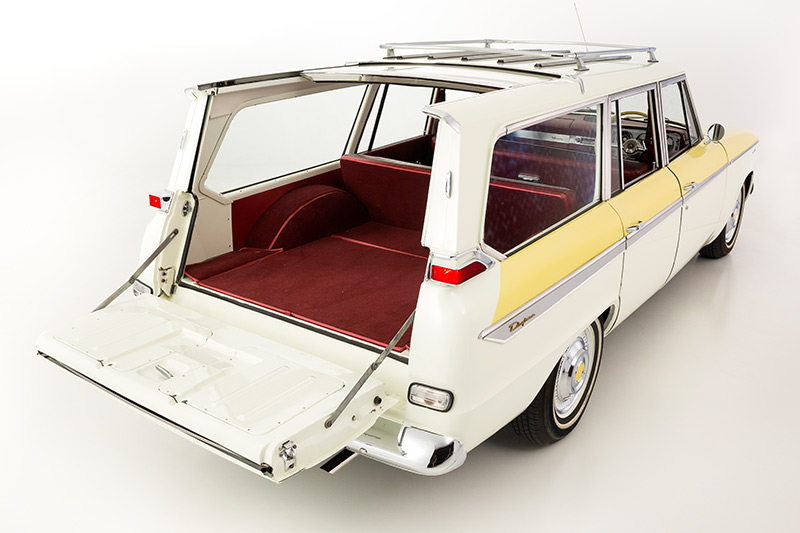
That one change effectively meant you could turn the wagon into a ute in a matter of seconds. Genius. The sliding panel is metal and manually operated in most cases, though there was an electric option available. Apparently the sealing and drain channels struggle in heavy rain, which can result in the occupants copping a bit of a spray – literally!
Studebaker’s mechanical platform was pretty straightforward. The Indiana company had two in-house V8s for this range: a 259 and 289ci. Both had a good reputation for reliability and the 259 seems to be the more common powerplant in Australian cars. The ultra-keen American buyer could order a high-performance version, with the supercharged engine out of the Avanti and a four-speed floor-shift manual.
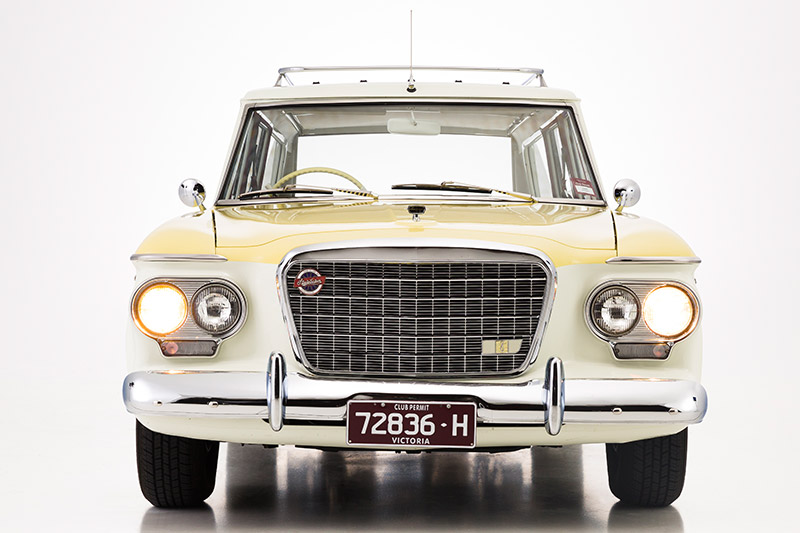
Later cars, built from the start of 1965, ran Chevrolet straight sixes or V8s.
Owner Richard Salter agrees these things are a rare beast. He estimates there are only about 20 in the country, with maybe 12 in running condition. This car was originally sold in NSW by York Motors and was bought from a fleet owned by the family of former Studebaker dealer and Bathurst class-winner Bert Needham.
Studebaker was active in racing here, in the USA and Canada (where they were also built) for many years, right through to the end. It was seen as a way of building up the brand image, even when funds were scarce.
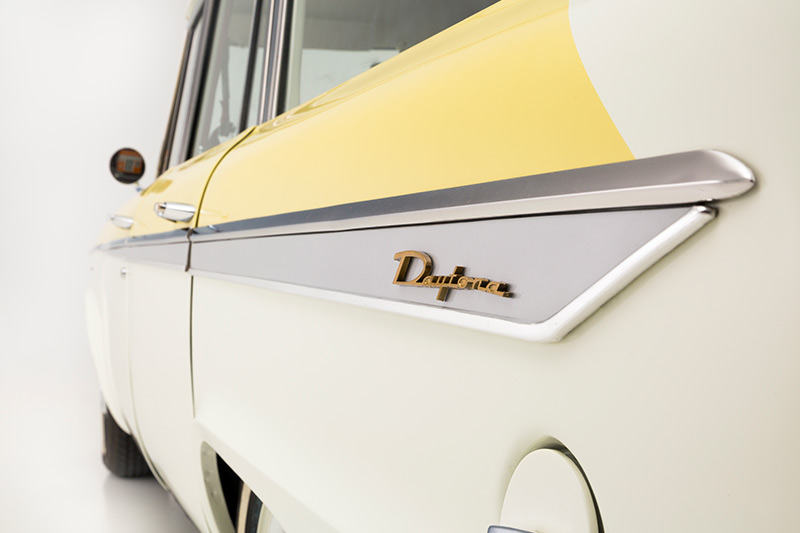
Here the marque still enjoys a very active national club, which you’ll come across at a lot of classic car events.
"I like wagons for some reason, don’t really know," says Richard, "This one particularly caught my eye because of the sliding roof – very unique. I think the marketing people from Studebaker back in the sixties thought it would be great for the family because of extra storage, carting tall things, plenty of room for the kids, the surfboards, that sort of stuff.
"This particular Daytona Wagonaire has a 4.3 litre, a small V8 – the other V8 that Studebaker manufactured was a 289. This is just a standard three-speed auto column-shift, it also came with a manual three-on-the-column with an overdrive, and a bit later on some of them came with a factory floor shift – four on the floor.
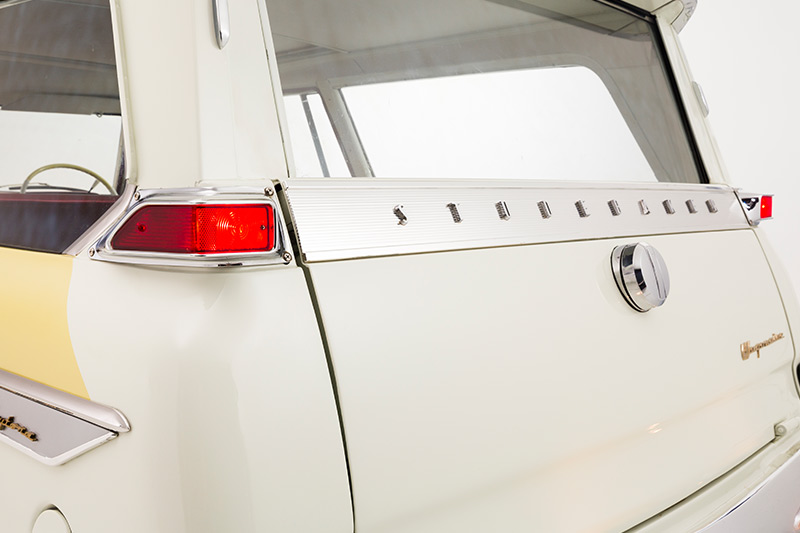
"When I got this car it looked a hell of a lot worse than it actually was. There was a lot of surface rust, I rubbed it back to bare metal by hand. There wasn’t too much to do after that – a little bit of rust to cut out.
"After I did the grunt work I got a professional painter to finish it off. The original colour was a boring grey and I agonised for hours over what to paint it. These are period colours but were never in this combination in this car.

"It’s a factory interior, in fact the seats and dashboard are all original – just tidied up a bit – and the carpets have been redone. The door cards and upholstery are all factory original.
"It’s not quite concours – there’d be a fair bit of work to get it up to that standard, but that doesn’t really interest me because I just love driving it around. I drive it as often as I can."
WAGON MARKET GUIDE
If you've stared at the pictures of our featured Daytona and been smitten with the idea of owning one, then local Studebaker clubs will be the best place to start.

Australian cars most likely came from Studebaker’s Canadian factory (which produced all Studebakers after 1963) but reliable production figures are hard to source. We can say with some certainty that just 618 Wagonaires were made in 1966 - Studebaker’s final year as a manufacturer.
If nothing is immediately available locally, your next stop may well be somewhere in the USA. There are some lovely cars featured on Studebaker web-sites but owners seemingly aren’t anxious to sell them.
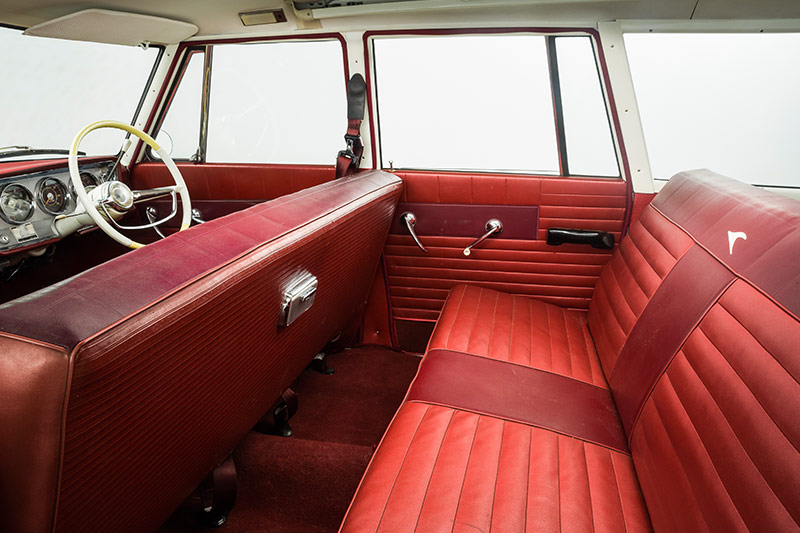
Wagonaires rarely appear in auction catalogues or on specialist car-lots so cruising the internet or haunting car shows is the best way to snare one. North American values are reasonable; good cars when they are offered costing US$12-15,000.
The truly fortunate might stumble across one of the incredibly rare R2 Wagonaires with the same supercharged V8 used in Studebaker’s sporty Avanti.
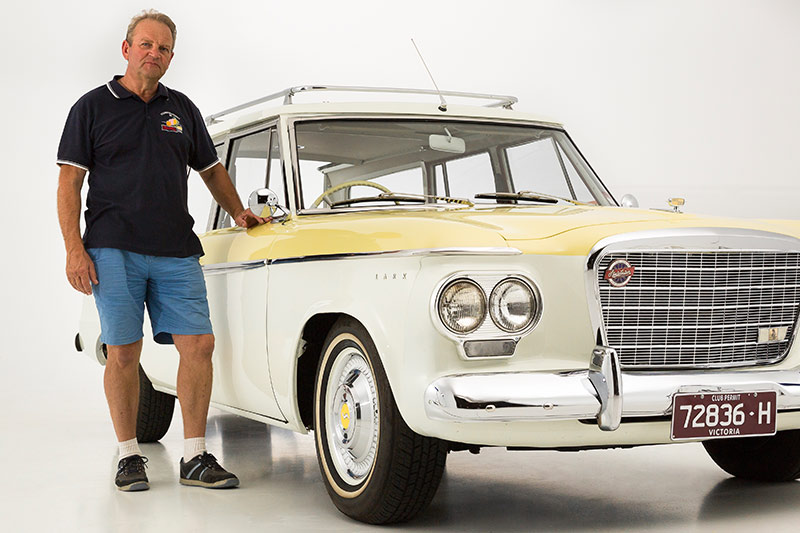
VALUE GUIDE: 1963-1966 Daytona
Fair: $8500
Good: $23,500
Excellent: $37,000
(Note: concours cars will demand more)
BUYER'S CHECKLIST
BODY & CHASSIS
Hands up all who are surprised to learn that replacement body panels for Stude wagons aren’t hard to find. Me too, however one large supplier in the USA is offering virtually every piece of sheet metal a restorer could want. The stuff isn’t cheap and checking fastidiously is still the cheapest and best way to ensure you get a car with minimal rust. New floor sections are available at US$450-600 per set while the complete rear floor section for wagons is currently under $1000. Lower tailgate skins cost $350 with freight extra. You can even buy a new electric lift assembly for the tailgate window. Before falling in love with a Wagonaire, check that nifty sliding roof panel. If it has been welded shut or the vendor doesn’t want it opened, assume there is a major and costly problem being concealed.

ENGINE & TRANSMISSION
Studebaker built its own engines and they were durable but, unless supercharged, not especially powerful. The 289 cubic inch unit is almost identical in displacement to a 4.7-litre Ford but without the wealth of performance parts available for that motor. Oil leaks, fuel leaks and good old wear and tear are the main issues affecting Studebaker engines. Thumps from deep inside the engine or rattling from the top end denote a motor ready for a rebuild which could add $3000-6000 to your purchase cost. Some parts are available from local suppliers but the array in the USA is immense. Manual transmission cars were available with overdrive and that, providing it works, is a big bonus. Most will be automatic; 1965-66 cars with Chevrolet-supplied 283 cubic inch engine
SUSPENSION & BRAKES
Pretty much everything you need to rebuild a creaking Studebaker front end is available, including power steering gear. Not cheap though; for a rebuilt power steering pump, ram and control valve expect to pay A$1500 exchange. Pairs of front coils are available at US$205 but new heavy-duty rear spring sets made specifically for the wagon cost US$595. Studebakers of this age will normally have all-drum brakes with a power booster. They can be touchy at first application but lose efficiency very quickly. V8 Lark sedans routinely led Bathurst 500 races during the 1960s until the brakes gave out. New parts are still available and disc brake conversion is viable.
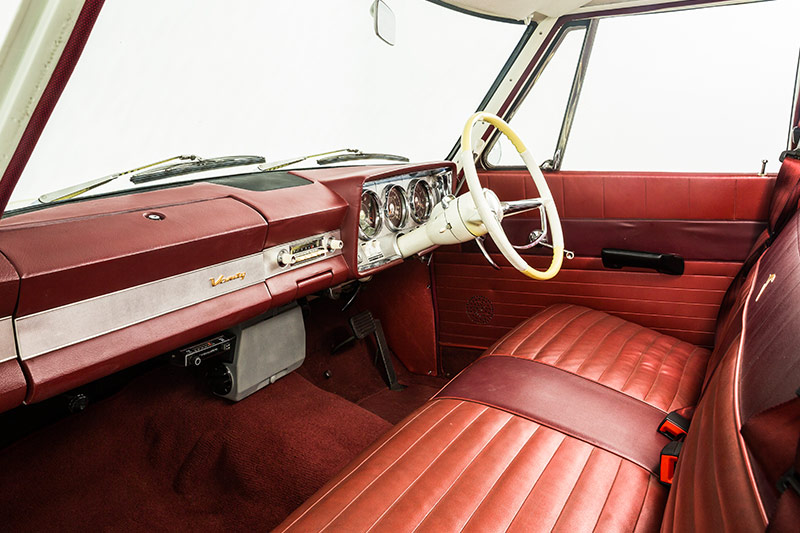
INTERIOR & ELECTRICS
Searching local sources for new items of Studebaker trim proved a fruitless exercise. Except for the usual array of ill-fitting moulded carpet sets, items that a buyer might need to refurbish the interior of a Daytona were thin on the ground. Checking again the US spares market turned up practically anything needed, however some prices will encourage buyers to bargain hard when buying a Stude with sub-par trim. When inspecting, ask to see the rear seat folded, wind down all the windows – including the tail-gate – listening for crunching noises from a binding, perhaps damaged mechanism.
SPECIFICATIONS
1963-1966 Studebaker Wagonaire
NUMBER MADE: N/A
BODY STYLES: steel integrated body/chassis four door wagon
ENGINE: 4248cc & 4736cc V8 with overhead valves and single downdraft carburettor
POWER & TORQUE: 144kW @ 4500rpm, 358Nm @ 3000rpm (4.2-litre 4bbl)
PERFORMANCE: 0-96km/h 12secs (est), 0-400 metres 19secs (est)
TRANSMISSION: three-speed manual, three-speed automatic
SUSPENSION: Independent with coil springs, wishbones and telescopic shock absorbers (f) Live axle with semi-elliptic springs and telescopic shock absorbers (r)
BRAKES: drum or disc (f) drum (r) power assisted
TYRES: 6.00 x 14 cross ply
Unique Cars magazine Value Guides
Sell your car for free right here
Get your monthly fix of news, reviews and stories on the greatest cars and minds in the automotive world.
Subscribe

.jpg)


